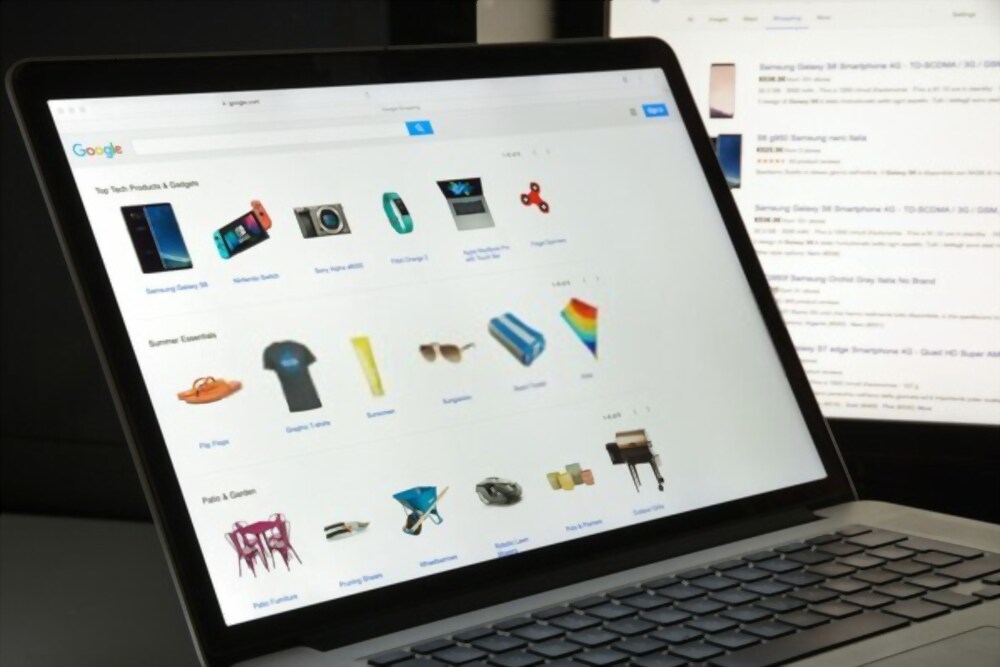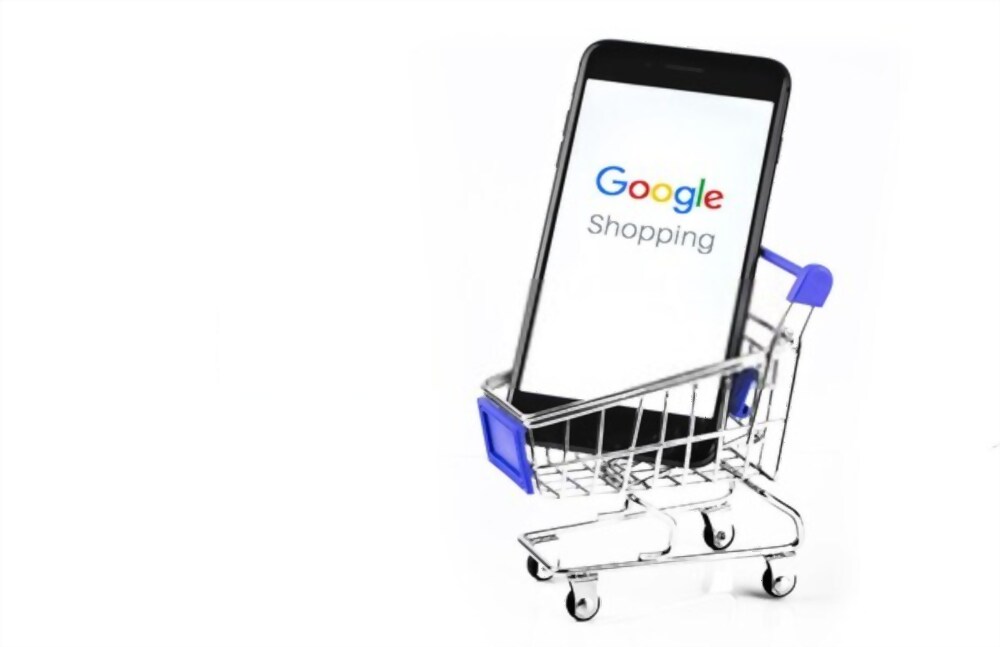Already successfully introduced in the India in April of this year, the new feature expanded to other cities – including Gujarat – at the end of October 2020: free Google Shopping content . This affects the newly introduced organic product entries, which are now displayed in the Google Shopping results in addition to the paid ads. What exactly is behind this idea? Can merchants increase their reach with the Google Ads alternative? And how important is the Google Shopping Feed?
In this post we will give you a quick overview of the changes and explain how you can use the new Google Shopping service for free.
What exactly has changed?
The new structure of the Google Shopping platform should bring back memories for the old online marketing hands. A free search engine for products was introduced back in 2002 – at that time under the name “Froogle”. It wasn’t until 2012, ten years later, that Google Shopping became chargeable. But the motto “Back to the Roots” is clearly not being pursued by Google, since classic Google ads will remain and Google expects to gain more market share in the long term through this change in strategy.
So far, online retailers have been able to use Google Shopping as a sales channel via paid ads. Now there is a new free option in the form of organic list entries in the Google Shopping tab. These can be optimized in a similar way to normal web searches and sorted according to relevance. Paid ads will still appear at the top (in the first row) and at the bottom of the designated ad spaces. The placement of the advertisements will still be decided here in the form of CPC auctions. The free results are displayed below a dividing line.
How can you use the new Google Ads alternative?
Is Google Shopping new territory for you yet? The first thing to do is to set up and optimize a “ Google Merchant Center” account . As with paid ads, all product information is uploaded here. To do this, you first have to create a shopping feed and export your product data – that is, you enter all products that you want to advertise online. Your own website must be verified for this and the applicable guidelines for the use of Google platforms must be observed. The data requirements for the product feed and the eligibility requirements to promote the products in free listings can be found in the Google Help Center.
If you are already doing Google Shopping and have connected your product data feed to the Google Merchant Center , participation in the “Google Platforms” program is sufficient . But the same applies to you: Take a critical look at your product feed. Because in order to achieve a good position in the ranking, the data quality is more important than ever . The underlying goal is to provide product information in such a way that the ideal match between search query and product is created. Everyone should also be familiar with the phenomenon that the competition is still manageable for paid advertising. If something is suddenly free, it quickly becomes full.
In order to be at the forefront, the following factors are crucial:
- Data quality
- Degree of optimization and timeliness
- competitive product prices
- Delivery time and availability.
Are you now toying with the idea of switching off your paid Google Ads and, alternatively, preferring only to rely on free Google Shopping? Be careful! Because that can lead to a significant drop in sales. Rather see organic Google Shopping as a useful addition to paid ads and as an opportunity to open up a new sales channel.
Tips for a good placement and more success when using the free shopping platform

To improve the performance of the free listings in the Shopping tab, use the following tips to optimize your product information and website:
1.- Optimize Google Shopping Feed
As already mentioned, a high-quality Google Shopping feed is the first requirement and the most important optimization lever for successful Google Shopping campaigns. The data contained in it get to see the users and are ultimately decisive for the purchase. The better the data basis – i.e. the cleaner the product data feed and the markup for structured data on the website – the better! This also requires manual work and the online shop must be well set up.
Of particular importance is the specification of the so-called stock keeping unit (SKU) , which, like an article number, identifies the stock or the product and makes the products of an online shop comparable with other providers.
2.- Which SEO measures have an impact on success?
General SEO criteria are another important key to optimization. Every product that is included in the Google Shopping feed should – on the basis of a search term analysis – be optimized in the following points:
- An individual product text is an important point of contact for the algorithm in order to be able to correctly assign the product to the search query. This should contain the most important search terms and product features and target the needs of the user.
- An individual meta title gives the Google algorithm “food” to match your own products with the user’s search query. The meta title should also be geared towards the most effective search terms that result from the search term analysis.
- An individual meta description outlines the topic as concisely and appealingly as possible and also includes the most important search terms.
In addition, there are other requirements for the product page that must be met in order to achieve a good placement in the organic product lists:
- Product images: Good product images are the be-all and end-all. Your product images should have a high resolution, represent the article optimally and comply with Google’s guidelines.
- Mobile-ready display : The number of mobile accesses is growing steadily and your landing pages should therefore be optimized according to the needs of mobile searchers.
- PageSpeed: Your shop shouldn’t have any problems in terms of page loading time either. The faster your website is, the better the user experience and the higher the crawl frequency.
3.- Prioritization: For which products is it worth entering organic Google Shopping?
You will certainly ask yourself which products have the best prospect of more sales and where it is worth getting started with organic Google Shopping. Based on current ads in Google Shopping, we can use a calculation method to classify the products with the best chances of success. Crucial key performance indicators such as profitability and price comparison value are taken into account. As an experienced SEA agency , we are happy to support you in identifying the products with the best sales potential and in setting up a well thought-out campaign structure.
That’s why Google Shopping pays off for you too – especially with the free option:
Google Shopping is fundamentally worthwhile for all online retailers and all product lines in accordance with the Google guidelines (this does not apply to closed B2B online shops, for example). The new way to use Google Shopping for free is helping almost all companies to generate more customers and more sales. The changeover – right at the beginning of this year’s Christmas business – should therefore have positive effects for many interest groups :
- For advertisers: Paid Ads can be supplemented with additional free product placements. This increases your own range significantly.
- For newcomers: Even without a large marketing budget, retailers can offer their products to a large number of people – an attractive option, especially for small and local retailers.
- For consumers: There are more products available from different retailers and thus there are more options for selection and comparison.
What is behind the transformation of Google Shopping?

Apparently, in the context of the current corona pandemic, Google would like to use this measure to help small and medium-sized companies to compete with “big players” and to strengthen the retail sector. In fact, there could be a lot more to it than that: In recent years, Google has increasingly lost its dominant position in e-commerce search queries to Amazon. Over 50% of product-related search queries are now made directly on Amazon and no longer on Google. Other online marketplaces such as eBay and Zalando are also gaining more and more market power. This suggests that the Google Shopping switch had been planned for some timeand the Covid-19 outbreak only accelerated those plans. With the increased number of products in the organic product lists, the attractiveness of Google Shopping for customers increases again. Thus, Google would probably not only support the small traders, but especially market share in the transactional area recover .
Organic Google Shopping has been implemented in the India since April. Google boss Matt Brittin already drew a positive interim balance : “Dealers who were represented in the shopping tab were able to record twice as many views of their products. The clicks increased by 50 percent . “
Initial experiences from our customer projects also show that the results of organic Google Shopping entries are significantly higher than those of classic Google Shopping Ads or smart shopping campaigns. In some cases, the conversion rate was even twice as high.
Conclusion
For all retailers it is now a question of: Use opportunities to generate additional traffic and sales! In particular, small and medium-sized companies that have so far refrained from placing shopping ads for budget or margin reasons can benefit from free Google Shopping in the future. For experienced retailers, organic Google Shopping is a useful addition to paid shopping ads, but not a substitute.
If you have never dealt with the topic of shopping feed optimization before, then you should start now at the latest. We would be happy to help you improve your starting position for organic listing and to make full use of the full advertising potential of Google Shopping. We are a certified Google Premier partner and, as a Google Shopping agency, have many years of experience in dealing with the Google Merchant Center and optimizing product landing pages.





